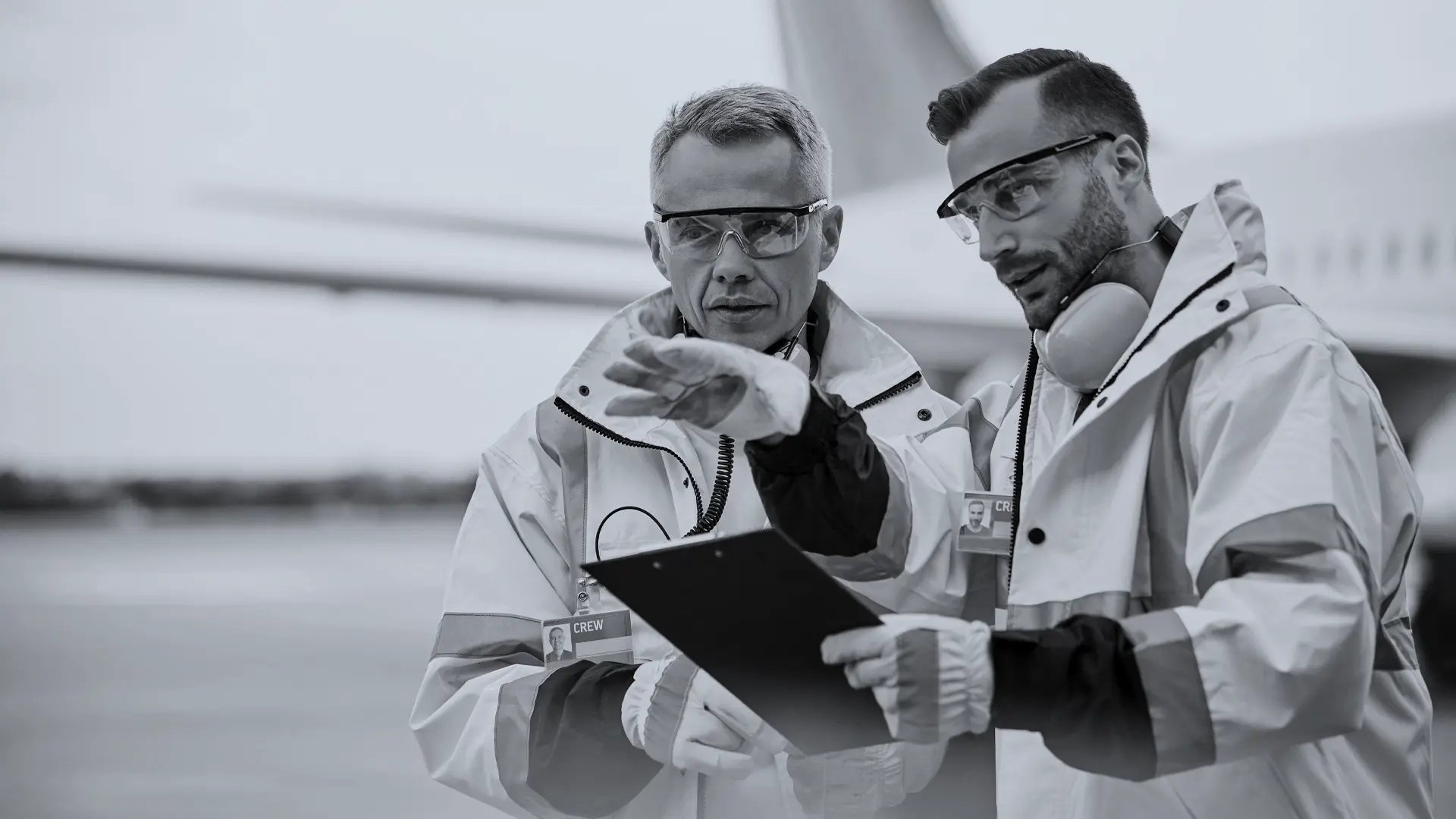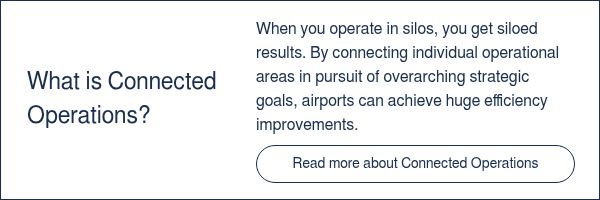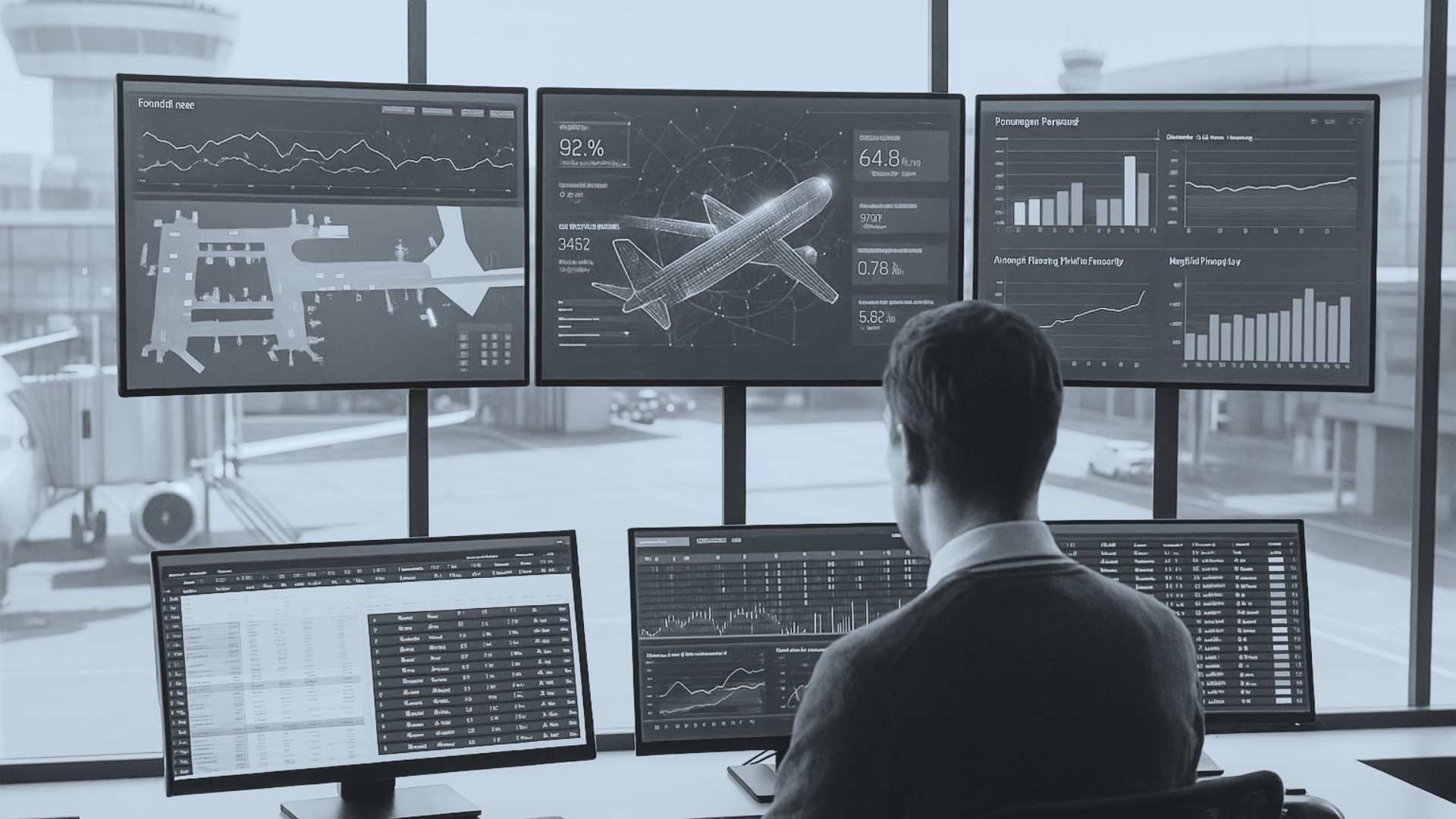The purpose of a resource management system is to manage the airport operations as efficiently and effectively as possible. In most cases, however, an airport’s RMS primarily functions as an administrative tool for resource management and rarely optimizes airport operations.
A resource management system (RMS) is a type of software specifically designed to support airport operations and ensure that the right resources are available to your airport operation when you need them.
At Copenhagen Optimization, we believe that to unlock the full potential of your airport, the industry needs to reconsider the role of the RMS and what it should be. The core of the traditional RMS is to facilitate operations. This is done through allocation of the physical resources of check-in counters, baggage belts, and stands and gates. But what about passenger and baggage dimensions? To elevate your approach to resource management from basic facilitation to efficient optimization you will benefit from a wider and more holistic view of your RMS solution. Ask yourself – are you getting enough out of your RMS today?
In this article, we’ll cover the basics of what a resource management system is used for. We will also introduce you to a broader take on the traditional RMS and how that will enable you to improve efficiency at your airport. If you want to do more and realize the true potential of your airport infrastructure, we will challenge you to think of it as more than an RMS.
What is an RMS used for?
A resource management system is used for planning, scheduling, and allocating resources used for airport operations.
In airports, resource management systems are typically used to manage the following core areas of operation:
- Reclaim belts: An RMS allocates flights to reclaim belts.
- Stand and gate allocation: An RMS helps you allocate stands and gates to incoming flights.
- Check-in desks: An RMS allows you to allocate check-in counters to handlers and airlines.
Some resource management system packages also include Flight Information Display Systems (FIDS) and Billing, although these are not core features of an RMS solution.
An RMS typically does not allow airports to plan more than three days out. With most solutions not being built to plan beyond this point, the RMS is often employed as an administrative tool rather than a tool for optimizing airport operations.
As the RMS is designed to manage some of the most important areas of airport operations, these limitations tend to leave much of the true potential of the RMS unutilized. To get the most value out of the RMS, it is necessary to go beyond the traditional confines of the system.
For this purpose, we have developed Connected Operations: the future of airport operations.
Connected Operations: What your RMS could be
For the modern airport to get the most value out of its resource management system, their core operations can no longer be conducted in silos: they must be connected.
This is why Copenhagen Optimization has developed Better Airport®: a cloud-based airport management SaaS platform that gives all airports, regardless of size, a simpler and more efficient way to run core operations.
Featuring nine core modules for airport optimization, Better Airport allows you to mix and match modules to create a solution perfectly suited to the specific needs of your airport. Every module can be connected, making it easy to forecast, understand, and plan passenger and baggage flows throughout the airport. We call this way of working Connected Operations — and we believe it’s the future of airport technology.
Connected Operations enables airport operators to connect individual operational areas in pursuit of overarching strategic goals. Instead of operating reclaim baggage, stands and gates, and check-in as standalone entities, you connect them.
With Connected Operations, these areas become fully integrated with security, immigration, and staffing, as well as baggage outbound. This allows you to utilize all the data points that your airport has access to, enabling your airport to get the most value out of your RMS. This way, you can better manage your operations, from forecasting and planning to day-of-operation and real-time adjustment.
Also read our article on Gate Management: 3 Critical insights that can transform airport operations.

The benefits: How Connected Operations can increase the value of your resource management system
There are many benefits to implementing Connected Operations at your airport. Here are seven ways in which Connected Operations can help you increase the value of how you handle resource management (RMS) and enhance the overall effectiveness of your airport management:
1. Increased operational efficiency
Upgrading your RMS approach through Connected Operations helps you optimize the use of airport resources, enabling you to reduce idle times and ensure that assets — e.g., stands and gates, baggage belts, and ground handling equipment — are used effectively. This can reduce turnaround time for aircraft and lead to overall smoother operations.
2. Reduced operational costs
With efficient resource allocation, your airport can reduce its operational costs by maximizing the utilization of higher-value resources and minimizing the need for excess capacity.
For example, the infrastructure surrounding outbound baggage and stand and gate management is typically expensive and time consuming to operate. Better management of these operational areas can lead to significant savings in investments.
3. Improved passenger experience
By efficiently managing resources such as check-in counters and security lanes, Connected Operations enables you to utilize your resource management system to reduce wait times and improve passenger and baggage flow throughout your airport.
This takes pressure off your airport operations during peak hours and contributes to a smoother, more positive passenger experience.
You might also be interested in: Airport Queue Management: What is virtual queuing?
4. Better safety and security
Connected Operations enables you to manage the flow of passengers and baggage throughout your airport. This does not only contribute to an improved passenger experience: it can also improve the security screening process.
Your upgraded RMS can also help you coordinate the scheduling of maintenance for equipment and facilities, which helps to enhance safety at your airport.
Also check out our article on Modern strategies to streamline Airport Security Checkpoints in 2024
5. Improved decision-making
An RMS enhanced by Connected Operations gives your airport managers access to crucial real-time data and analytics, allowing them to make informed decisions about resource allocation and operational adjustments.
With this data-driven approach to operations, your airport can achieve better and more strategic planning, as well as improve responsiveness to operational challenges.
6. Increased flexibility and scalability
Connected Operations enables you to adapt to changing conditions, such as weather changes, flight delays, or unexpected events. This allows your airport to respond dynamically to challenges and maintain operations. This flexibility also allows you to scale operations according to seasonal demand or long-term growth.
7. Enhanced communication and collaboration
With your RMS upgraded by Connected Operations, you gain a centralized platform that optimizes communication and coordination among airport stakeholders, including airlines, air traffic control, ground handlers, and airport authorities.
With Better Airport, everyone you collaborate with — internally as well as externally — can easily access and use all functionality. This can lead to more cohesive operations, as well as a shared understanding of operational goals and challenges across all areas of your airport operations.
Enhance your airport operations with Copenhagen Optimization
To get the most value out of your resource management system, your core operations can no longer be conducted in silos: they must be connected.
This is what Better Airport® and Connected Operations enable you to achieve. By implementing Connected Operations, you can leave behind the traditional confines of your RMS and take your airport operations into the future.
Learn more about 5 Airport Technology Trends to Watch in 2024





